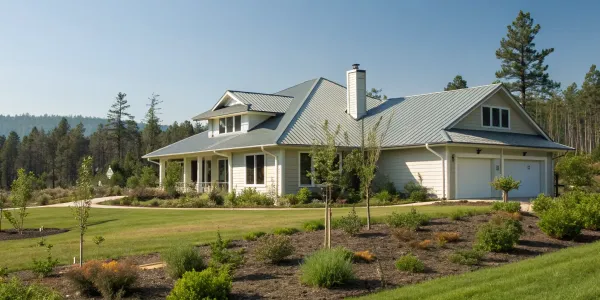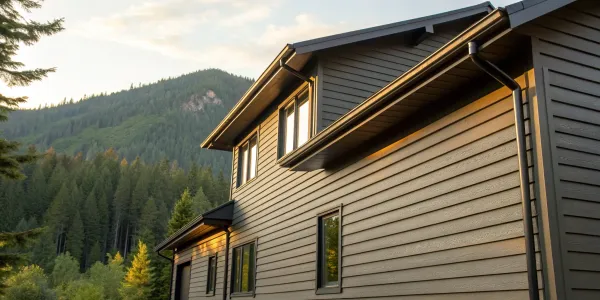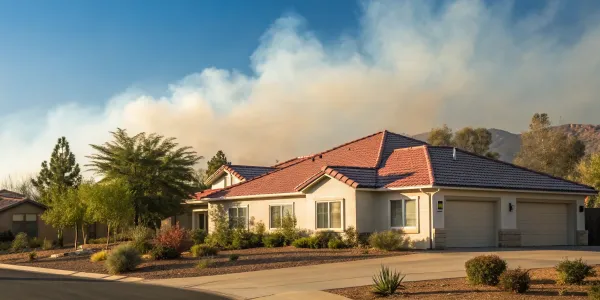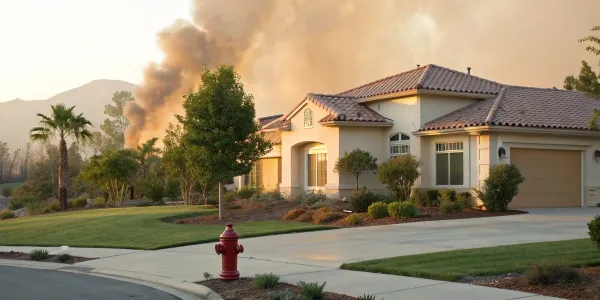Are uPVC Windows Fire Resistant? A Home Safety Guide
Curious about fire safety? Get clear answers to "are uPVC windows fire resistant" and learn how to choose the safest windows for your home.
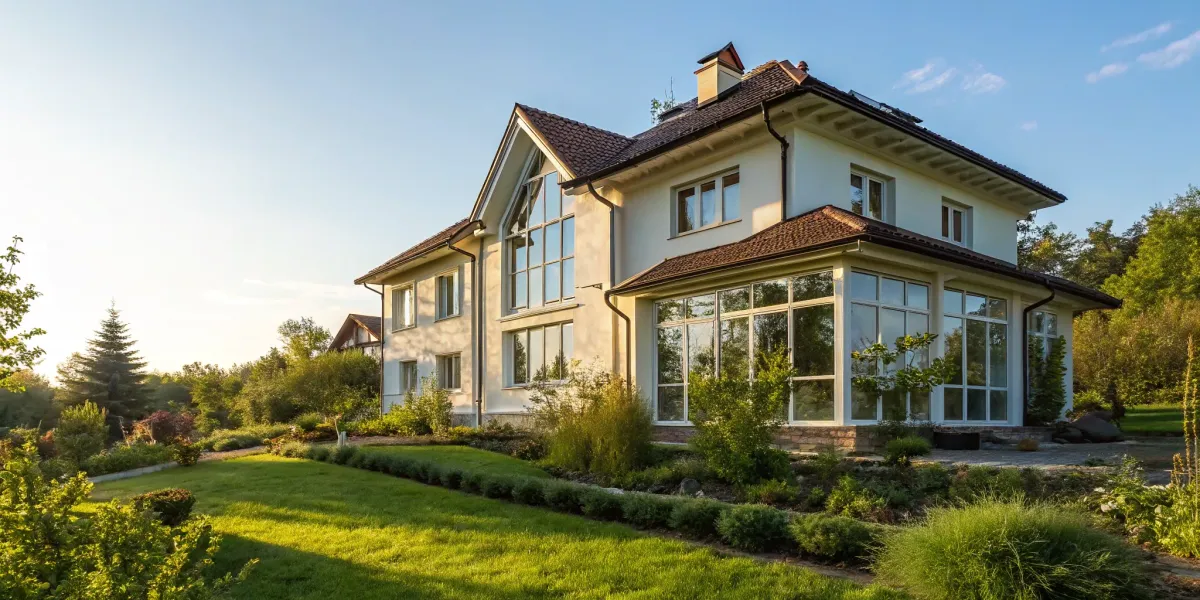
There's a lot of conflicting information out there about building materials, and it can be tough to sort fact from fiction. When it comes to protecting your home from fire, you can't afford to rely on myths. You may have heard people claim that uPVC windows are a perfect fireproof solution, while others suggest they might not be safe at all. So, what’s the real story? Are uPVC windows fire resistant? We’re here to clear up the confusion. We will tackle the common misconceptions head-on and give you the facts about how high-quality uPVC performs in a fire, what the safety ratings actually mean, and why not all uPVC products are created equal.
WiserBuild CTA Button
Key Takeaways
- Trust uPVC's inherent fire resistance: The material is designed to be self-extinguishing, meaning it won't add fuel to a fire like wood or transfer dangerous heat like aluminum. This helps slow a fire's spread and buys you valuable time.
- Verify quality with ratings and professional installation: A fire-resistant window is only effective if it's well-made and properly installed. Always choose windows with certified fire ratings that meet local codes and ensure a professional installs them to create a perfect seal.
- Make windows part of a complete safety plan: Your uPVC windows work best when supported by other smart choices. Combine them with regular maintenance, fire-resistant landscaping, and other resilient building materials to create a truly prepared home.
How Do uPVC Windows Stand Up to Fire?
When you're building or renovating, especially in an area prone to wildfires, every material choice matters. Windows are a critical part of your home's defense system against fire. You might have heard about uPVC windows as a durable, low-maintenance option, but how do they actually perform when things heat up? Understanding the properties of uPVC can give you confidence in your building plans. It’s not just about looks or energy efficiency; it’s about safety and resilience. Let's break down what makes uPVC a strong contender for fire-resistant windows.
What Exactly Is uPVC?
First things first, let's clear up the name. uPVC stands for Unplasticized Polyvinyl Chloride. Think of it as a rigid, tough type of plastic that’s become a go-to material for window frames, doors, and siding. Unlike regular PVC, it doesn't have plasticizers added, which are chemicals that make plastic softer and more flexible. This lack of plasticizers is what makes uPVC so strong and durable. It’s built to resist warping, cracking, and fading from the sun, making it a really practical choice for your home's exterior. Its sturdy structure is the foundation for its performance in many areas, including fire safety.
The Science Behind Its Fire Resistance
So, what makes uPVC fire-resistant? The secret is in its chemical makeup. uPVC is made largely of chlorine (from salt) and ethylene (from natural gas). That high chlorine content is key—it makes the material inherently flame retardant. This isn't an added chemical coating that can wear off; it's part of the material's molecular structure. Because of this, uPVC is naturally difficult to ignite and won't sustain a flame on its own. Once the external fire source is removed, the material will self-extinguish. This built-in resistance is a major reason why uPVC is specified in many fire safety building codes.
Why uPVC Doesn't Fuel a Fire
One of the biggest concerns during a fire is how quickly it can spread. Some materials can act like fuel, making a bad situation much worse. This is where uPVC really shines. Because it’s difficult to ignite and self-extinguishing, it doesn't contribute to the fire load of your home. Instead of feeding the flames, a well-installed uPVC window frame helps contain them. It can slow down the spread of fire from one room to another or from the outside in, giving you precious time to get to safety. This characteristic is a critical component of a resilient home design, especially in high-risk areas.
How Much Heat Can They Take?
While uPVC is fire-resistant, it's important to know its limits—no material is completely "fireproof." uPVC is very difficult to set on fire and requires a lot of heat to ignite. However, under intense and prolonged heat, like in a fully developed house fire, the material will soften and deform. This is a gradual process, not a sudden failure. The key takeaway is that it won't drip molten material or produce flaming droplets that could spread the fire further. Its job is to resist ignition and slow the fire's progress, and it does that exceptionally well under the conditions outlined in standard fire tests.
Decode Fire Safety Ratings and Codes
When you’re building or renovating, especially in an area prone to wildfires, the technical jargon around safety can feel overwhelming. But understanding fire ratings and building codes isn’t just about checking a box for a permit—it’s about making informed choices that protect your home and family. These standards are designed to give you a clear picture of how materials will perform under extreme stress, helping you build a more resilient and insurable home from the ground up. Let's break down what these codes and ratings really mean for your windows.
What Do Fire Safety Ratings Mean?
Think of a fire safety rating as a performance benchmark. It tells you how long a window assembly—including the frame, glass, and seals—can withstand fire and prevent it from spreading. For uPVC, its fire resistance comes from its chemical makeup. The material is naturally fire-resistant due to its chlorine content, which helps to inhibit the spread of flames. When you see a fire rating, it indicates that the product has been tested to meet specific standards for flame spread and heat resistance, giving you a reliable measure of its safety performance.
How Windows Are Tested for Fire Safety
To earn a fire rating, windows go through rigorous testing in a controlled lab environment. They are exposed to intense heat and flames for a specific period to see how they hold up. The goal is to measure how well the window contains the fire and blocks heat from passing through. In a real house fire, properly installed uPVC windows can help contain the flames longer, slow their spread, and reduce smoke, which is critical for giving you more time to get to safety. This testing ensures that the products you install in your home perform as expected when it matters most.
Know Your Local Building Codes
Building codes are your local rulebook for construction, and they are not one-size-fits-all. Requirements can vary dramatically depending on where you live, especially in high-risk areas. Many communities in wildfire-prone regions follow the International Wildland-Urban Interface Code (IWUIC), which sets specific standards for building materials, including windows, to reduce the risk of ignition from embers and flames. Before you buy, always check your local codes to ensure the windows you choose meet the necessary fire-resistance ratings. This step is crucial for getting your plans approved and securing homeowner's insurance.
Why Proper Installation Is Critical
A top-tier, fire-rated window can fail if it’s not installed correctly. The gaps between the window frame and the wall are vulnerable points where embers and extreme heat can get in. Professional installation ensures a tight seal, eliminating these weak spots. It’s also important to remember that safety is an ongoing commitment. To ensure the continued fire resistance of your uPVC windows, schedule regular maintenance and address any repairs promptly. A well-maintained window performs better over its lifetime, giving you lasting peace of mind.
uPVC vs. Other Window Materials: A Fire-Safety Showdown
When you’re building or renovating, especially in an area prone to wildfires, every material choice counts. Windows are a critical part of your home's defense against fire, acting as a barrier between you and the outside elements. So, how does uPVC stack up against traditional options like wood, aluminum, and modern composites? Let's break down the performance of each material when the heat is on, so you can make a confident decision for your home's safety.
uPVC vs. Wood
Wood windows have a classic, timeless appeal that many homeowners love. When it comes to fire, some high-density hardwoods and treated lumber offer a decent level of resistance, comparable in some cases to uPVC. However, wood is a combustible material. Its primary drawback is its vulnerability to the elements over time. Wood can rot, warp, or be damaged by insects, which can compromise the window's seal. In a fire, any gap or weakness in the frame can become an entry point for embers and flames. uPVC, on the other hand, is resistant to rot and corrosion, ensuring its structural integrity and tight seal remain intact for years.
uPVC vs. Aluminum
Aluminum is strong, durable, and low-maintenance, but it has one significant weakness in a fire: it’s an excellent conductor of heat. During a fire, an aluminum window frame can become extremely hot, transferring that heat to the interior of your home. This process, known as thermal conduction, can ignite nearby flammable materials like curtains, blinds, or furniture, even if the flames haven't breached the glass. uPVC is a poor heat conductor, meaning it helps insulate your home from extreme temperatures. Instead of transferring heat, a uPVC frame is more likely to char on the surface, which helps protect what’s inside and prevents the fire from spreading through this mechanism.
uPVC vs. Composite Materials
Composite windows, often made from a mix of materials like wood fibers and polymers, are designed to offer the best of multiple worlds. Their fire resistance, however, can vary dramatically from one product to another. While some composites are engineered for excellent fire performance, others may not be. uPVC’s fire resistance is an inherent property of its chemical makeup—the chlorine content makes it naturally difficult to ignite. With composites, you have to carefully check the specifications and look for a product’s specific fire-resistance rating to know what you’re getting. uPVC offers a more consistent and predictable level of performance.
How Each Material Performs in a Fire
When exposed to fire, different materials behave in distinct ways. Wood, being a natural fuel source, will eventually burn and contribute to the fire's growth. Aluminum won't burn, but it can melt at high temperatures and, as we've covered, conducts heat dangerously. uPVC performs differently. It is self-extinguishing, meaning that once the external flame source is removed, it will stop burning. As it heats up, it forms a protective layer of 'char' that acts as a thermal barrier, slowing the fire's spread. This quality helps contain flames longer, giving you and your family precious time to escape and potentially reducing the overall damage to your property.
Common Myths About uPVC and Fire Safety
When you’re trying to make the best choices for your home, especially in an area prone to wildfires, you run into a lot of information—and not all of it is accurate. Misconceptions about building materials can be confusing and, frankly, a little stressful. Let’s clear the air and tackle some of the most common myths and facts about uPVC windows and their performance in a fire. Understanding the truth will help you feel more confident in your decisions and ensure your home is as safe as it can be.
Myth: "Fire-Resistant" Means "Fireproof"
This is probably the biggest point of confusion, so let's get it sorted out right away. While uPVC offers a high level of fire resistance, it is not completely fireproof. No window material truly is. The term "fire-resistant" means the material is designed to withstand fire for a certain period, slow down the spread of flames, and not contribute fuel to the fire. Think of it as buying you precious time in an emergency. High-quality uPVC frames are self-extinguishing, meaning they won’t continue to burn once the heat source is removed. This is a critical feature that can help contain a fire to one room, giving you and your family more time to get to safety.
Myth: All uPVC Windows Are Created Equal
It would be nice if you could just pick any uPVC window and know you’re getting top-tier fire protection, but that’s simply not the case. The reality is that not all uPVC products are made to the same fire safety standards. Quality varies significantly between manufacturers, and a lower-quality frame won’t perform as well under pressure. That’s why it’s so important to do your homework. Look for windows that have been tested and certified to meet specific fire safety codes. Checking for these ratings ensures you’re getting a product that has been proven to perform as promised when it matters most.
Fact: Quality and Composition Matter
So, what makes one uPVC window better than another in a fire? It all comes down to the material’s chemical makeup. The secret to uPVC’s fire resistance lies in its composition, specifically its high chlorine content. This gives the material its natural flame-retardant properties. Higher-quality uPVC has a more stable and consistent composition, ensuring it performs reliably. Cheaper alternatives might cut corners, resulting in a product that can’t stand up to intense heat. When you invest in a well-made window from a reputable manufacturer, you’re investing in a material that is engineered for safety.
Fact: uPVC Won't Drip or Spread Flames
Here’s a crucial safety feature that sets high-quality uPVC apart from other materials. When exposed to fire, uPVC doesn’t melt and drip the way some plastics do. Dripping material can spread a fire to curtains, carpets, and furniture, making a bad situation much worse. Instead, uPVC tends to char and is designed to be self-extinguishing. This means your window frames can actually help contain a fire longer and slow its spread throughout your home. It’s a small detail in the window’s performance that can make a huge difference in an emergency.
Maximize Your Home's Fire Safety
Choosing fire-resistant uPVC windows is a fantastic step toward a safer home, but it’s not the only one. To get the full benefit of their protective qualities, you need to think about the entire lifecycle of the window—from installation to upkeep—and how it fits into your home's overall safety plan. A great window can only do its job if it’s installed correctly, maintained properly, and supported by other smart safety measures. Let's walk through the key actions you can take to ensure your windows provide the best possible protection against fire.
Get a Professional Installation
You can choose the highest-rated fire-resistant window on the market, but its effectiveness will be seriously compromised by a poor installation. The performance of a window during a fire depends heavily on how well it’s sealed into the wall. A professional installation ensures there are no gaps or cracks where flames, smoke, or extreme heat can penetrate. In a house fire, properly installed uPVC windows will help contain the flames longer and slow their spread.
When hiring an installer, ask about their experience with fire-rated products and your local building codes. A certified professional will ensure the window is fitted perfectly, sealed correctly, and functions as it was designed to, giving you true peace of mind.
Simple Maintenance for Lasting Safety
Once your windows are installed, a little routine care goes a long way in preserving their safety features. Over time, exposure to the elements can wear down seals or cause minor damage that might not seem like a big deal. However, even small issues can compromise a window's ability to resist fire. Make it a habit to inspect your uPVC windows a couple of times a year. Check for cracked seals, damage to the frame, and ensure the locking mechanisms are working smoothly.
Cleaning the frames and tracks also prevents buildup that could interfere with a tight seal. If you find any issues, it's important to address repairs promptly. Consistent maintenance ensures your windows remain a reliable barrier, ready to protect your home when it matters most.
Look for Features Like Tempered Glass
The uPVC frame is just one part of a fire-resistant window; the glass itself plays a huge role. When you're selecting windows, look for options with tempered glass. This type of safety glass is heat-treated to be about four times stronger than standard glass. In a fire, its real advantage is how it breaks. Instead of shattering into large, dangerous shards, tempered glass crumbles into small, pebble-like pieces, reducing the risk of injury and helping to maintain the window's structural integrity for longer.
Beyond the glass, look for frames with multi-chambered construction. These internal pockets of air not only improve insulation but also slow the transfer of heat, adding another layer of fire resistance to the entire window unit.
Pair Windows with Other Home Safety Measures
Your windows are a critical component of a much larger home safety system. To create a truly resilient home, especially in a high-risk area, you need to think holistically. Fire-resistant uPVC windows and doors work best when they are part of a comprehensive fire protection strategy. This includes using fire-resistant roofing and siding materials and practicing smart landscaping.
Creating defensible space by clearing flammable vegetation away from your home can prevent flames from ever reaching your windows in the first place. Inside, make sure you have working smoke detectors, accessible fire extinguishers, and a family emergency plan. When all these elements work together, you build a home that is truly prepared.
Choose the Right Fire-Resistant Windows
Making the right choice for your home’s windows goes beyond aesthetics. In areas prone to wildfires, your windows are a critical part of your home's defense system. Selecting high-quality, fire-resistant uPVC windows involves looking at the material, understanding the safety ratings, and considering the long-term implications for your insurance and maintenance routine. Here’s how to make a confident decision that protects your home and family.
What to Look for in a Quality Window
When you're shopping for uPVC windows, remember that not all products are created equal. The quality of the uPVC compound makes a huge difference in its performance. High-quality uPVC is naturally fire-resistant because its chlorine content helps stop flames from spreading. Look for windows from reputable manufacturers that provide clear information about their materials and testing standards. A comprehensive guide to choosing uPVC windows can help you identify key features, like multi-chambered profiles and reinforced frames, which add to both the structural integrity and the fire resistance of the window. Don’t be afraid to ask for product specifications and certifications.
Check the Specs: What Numbers to Know
Fire safety ratings can seem technical, but they provide essential information about how a window will perform under extreme heat. These ratings come from standardized tests that measure how long a material can resist fire and prevent it from passing through. When properly installed, quality uPVC windows can help contain a fire longer, slow its spread, and reduce smoke. Look for labels or product documentation that indicate compliance with local building codes and fire safety standards. These specs are your best indicator of a window’s ability to hold up when it matters most, giving you precious time to get to safety.
How Your Windows Affect Your Home Insurance
Your choice of windows can have a direct impact on your home insurance. Insurers often look favorably upon homes built with resilient materials, and installing certified fire-resistant windows can sometimes lead to lower premiums. It signals to them that you’re taking proactive steps to reduce risk. Before you make a purchase, talk to your insurance agent about what they recommend. After installation, be sure to update your policy to reflect the upgrade. Understanding the relationship between window replacement and home insurance ensures you get the credit you deserve for making your home safer and more insurable.
Choosing Windows That Last
Even the best fire-resistant windows need proper care to maintain their protective qualities over time. The long-term performance of your uPVC windows depends on both the quality of the installation and consistent maintenance. It’s important to schedule regular maintenance and address any repairs right away. Periodically inspect the seals and caulking around the frames to ensure there are no gaps where embers could enter. Keep the tracks clean and check for any cracks or damage to the glass or frame. A little upkeep goes a long way in ensuring your windows provide lasting safety and peace of mind.
Related Articles
- The Ultimate Guide to Fire-Resistant Windows
- Are Fiberglass Windows Fire Resistant? The Facts
- The Ultimate Guide to Fire Rated Window Installation
- Fire Rated Windows Residential: A Complete Guide
WiserBuild CTA Button
Frequently Asked Questions
Are uPVC windows really fireproof? No building material is completely fireproof, and it’s important to understand the distinction. The term "fire-resistant" means that uPVC is specifically designed to slow down a fire's progress. Because of its chemical makeup, it is very difficult to ignite and won't provide fuel for a fire. If the source of the flame is removed, the uPVC will stop burning on its own. This self-extinguishing quality is what helps contain a fire, giving you more time to get to safety.
What's more important for fire safety: the uPVC frame or the glass? Think of a fire-resistant window as a complete system where every part has a job. The uPVC frame is crucial because it resists ignition and doesn't transfer heat the way metal does. The glass is equally important. Choosing an option like tempered glass, which is much stronger than standard glass and breaks into safer, pebble-like pieces, adds another layer of defense. For the best protection, you need a high-quality frame and strong glass, all installed correctly to create a solid barrier.
How can I be sure I'm buying a high-quality, fire-resistant uPVC window? Quality can vary quite a bit between manufacturers, so it pays to do a little research. Don't just rely on marketing claims. Ask for the product's technical specifications and look for proof that it has been tested and certified to meet local fire safety building codes. Reputable brands will have this information readily available. Choosing a window with a proven track record ensures you’re getting the performance and protection you expect.
Will installing fire-resistant uPVC windows lower my home insurance costs? It very well could. Insurance companies see homes built with certified fire-resistant materials as a lower risk, which can often translate into more favorable premiums. By proactively making your home more resilient, you’re making it more insurable. It’s always a good idea to talk with your insurance agent before you begin a renovation to see which upgrades might have a positive impact on your policy.
Do uPVC windows require special maintenance to keep them fire-resistant? The good news is that the fire resistance is an inherent property of the uPVC material itself, not a coating that can wear off. The maintenance needed is quite simple and is mostly about ensuring the window's structural integrity. A couple of times a year, you should inspect the seals and caulking around the frame to make sure there are no gaps where embers could get in. Keeping the window in good working order ensures it can perform as designed when you need it most.

